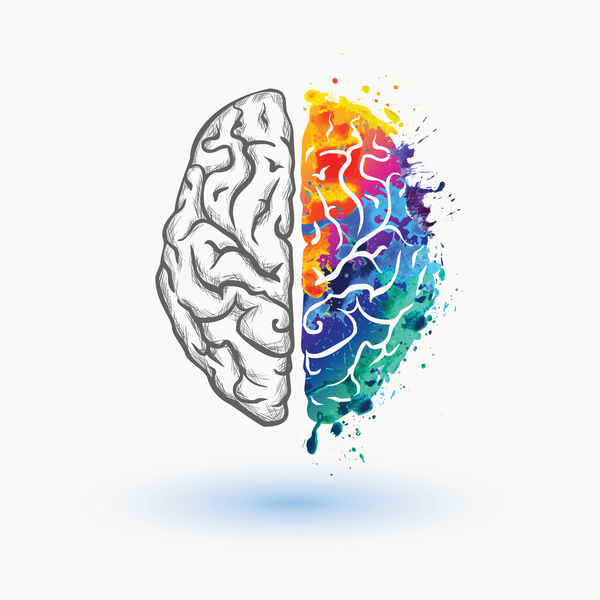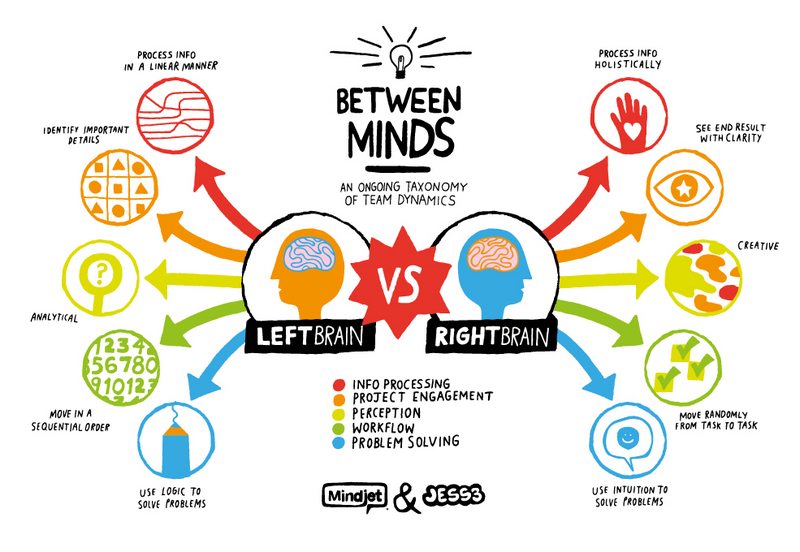ATD Blog
Left or Right: Which Part of the Brain Do You Side With?
Thu Feb 07 2013

Understanding how human brains process information is a valuable skill for any L&D professional who designs learning. And while performance improvement solutions ought to be aligned to organizational goals, they should first and foremost align to the ways in which an individual brain chooses to assimilate and retain learning. Therefore, understanding whether your target audience is analytically or intuitively inclined for example will dictate the direction of your learning strategy.
Nobel Prize recipient Roger Sperry developed the study of the relationship between the human brain’s right and left sides. He found that the left half of the brain tends to function by processing information in an analytical, rational, logical, sequential way. The right half of the brain tends to function by recognizing relationships, integrating and synthesizing information, and arriving at intuitive insights.
So the left brain tends to break information apart for analysis, while the right brain tends to put information together to synthesize a whole picture.
How to decide what direction to take?
The first step L&D professionals needs to take is to identify audience behavioral style. For example, According to Tappen, Weiss, and Whitehead, nurses “demonstrate certain behavioral traits which allow them to excel at their profession.” These behaviors include the ability to think critically, problem solve, show respect for people, communicate skillfully, and set goals—exhibiting traits of the left side of the brain functions. In my own work in the healthcare industry, many times I have included activities that would stimulate the left side of the brain as a part of nurses’ professional development curriculum.
Another example is the behavioral style of the sales force. Studies suggest that sales people prefer to be around others and tend to be very enthusiastic and entertaining. They enjoy contacting people, making a favorable impression, speaking articulately, creating a motivational environment, and participating in groups—traits of the right hemisphere of the brain functions.
You will be able to identify those behavioral traits by examining your audience through focus groups, interviews, or behavioral assessments such as DiSC. Once you identify the way your audience will mostly accept the information share during your learning solution, it is time to decide how to create your learning strategy and design the learning. As you can see in the graphic bellow (available here), you can adjust the content of your learning solution to the way your audience’s brains prefer to be stimulated. Note that we normally prefer one style of thinking, which is called the dominant preference. In addition, more than one style may be dominant at a time.

Infographic from Mindjet
Activities and delivery options designated to each side of the brain.
The Right Brain
The right side of the brain is best at expressive and creative tasks. Some of the activities that can be associated with the right side of the brain include:
Skill practice (role playing)
Creating and writing your own stories
Map reading games
Social games (Jeopardy, Deal or No Deal, etc…)
Theater games and/or activities
The Left Brain
The left-side of the brain is considered to be adept at tasks that involve logic, language, and analytical thinking. Some of the activities that can be associated with the left side of the brain include:
Problem-based learning (PBL) activities
Puzzles
Strategy games
Working through a problem in a sequential order
Mathematic problems
Take-aways
Perhaps the most important take-away is that when we create learning materials, reports, presentations, etc., we should design them to work for both sides of the brain. For example, presentations built solely with bullet points are only aimed at the left side of the brain. Thus we need to create charts, relevant pictures, etc. so that it is aimed at both sides.
While often overgeneralized and overstated by popular psychology and self-help texts, understanding your strengths and weaknesses in certain areas can help you develop better ways to learn and study. For example, learners who have a difficult time following verbal instructions (often cited as a right-brain characteristic) can benefit from writing down directions and developing better organizational skills.
And most importantly, remember that the brain, like a muscle, works on the “use it or lose it” principle. The more inactive we let certain parts of our brains become, the harder it is for us to perform.
References
Clark, R. C., Mayer, R. E. (2007). e-Learning and the Science of Instruction. 2nd edition. San Francisco: Pfeiffer.
Clark, R. C., Lyons, C. (2004). Graphics for Learning. San Francisco: Pfeiffer.
Corbalis, M., Beale, I. (1976). The Psychology of Left and Right. Hillside, NJ: Lawrence Erlbaum Associates.
Hellige, J. (2001). Hemispheric Asymmetry: What's Right and What's Left (Perspectives in Cognitive Neuroscience). Cambridge, MA: Harvard University Press.
Herrmann, N. (1996). The Whole Brain Business Book, McGraw-Hill: New York.
Herrmann, N. (1999). The Theory Behind the HBDI and Whole Brain Technology.
You've Reached ATD Member-only Content
Become an ATD member to continue
Already a member?Sign In
